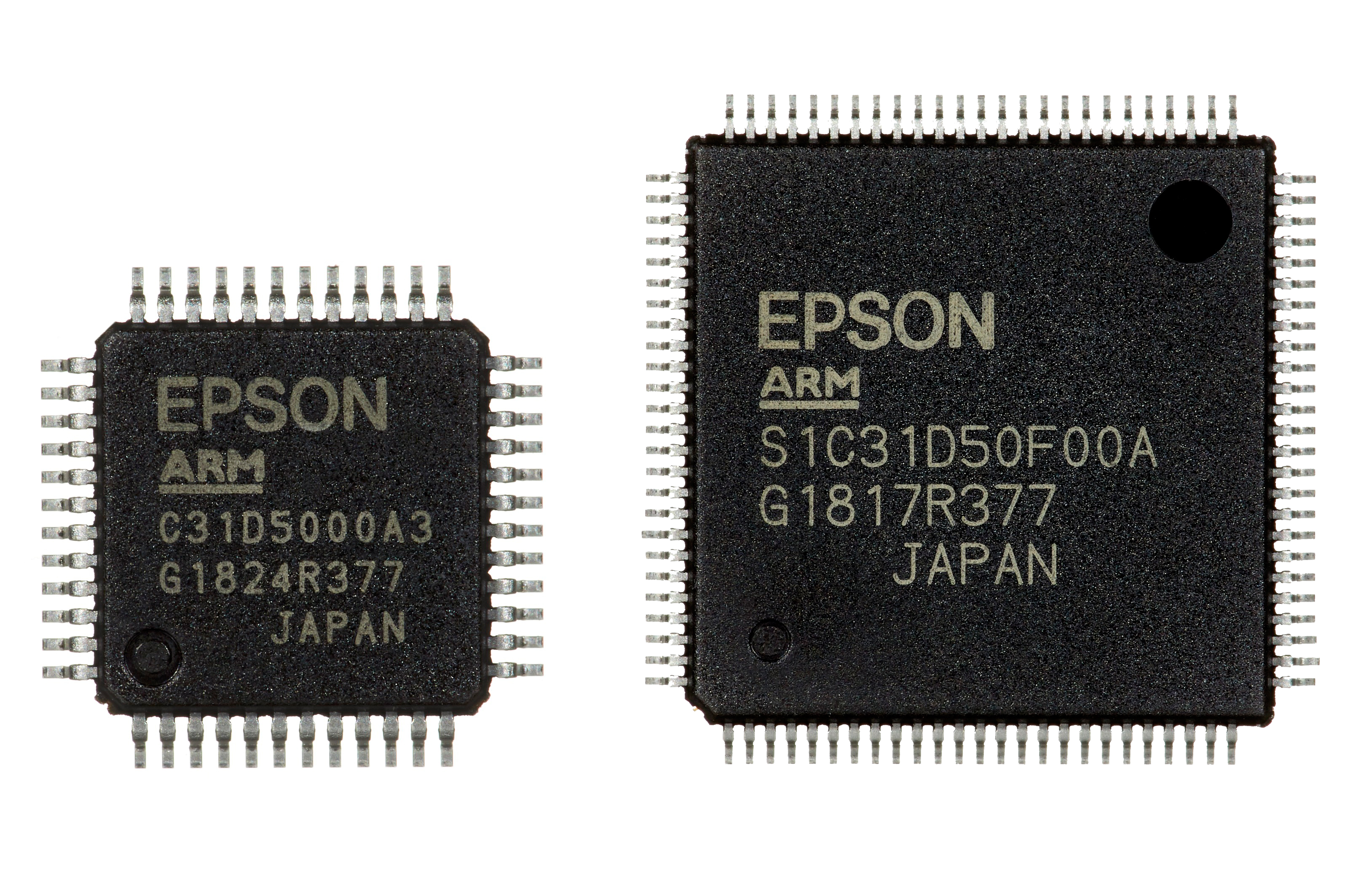Seiko Epson Corporation (TSE: 6724, “Epson”) has begun shipping samples of the S1C31D50, a 32-bit microcontroller with dedicated sound hardware for 2-channel sound. Epson plans to produce 200,000 units per month of each model.

Sound is becoming an increasingly popular feature in home electronics, remote controllers for home appliances, industrial devices, health and fitness equipment with guidance systems, and alarms in office buildings, shopping complexes, and factories. This MCU is ideal for all these applications. An ARM® Cortex®-M0+ processor integrated with a dedicated HW Processor provides 2-channel sound on a single MCU chip. The use of two channels enables music and voice to be played simultaneously, lending audio guidance greater elegance and warmth. Voice speed can also be flexibly adjusted.
The MCU’s dedicated HW Processor sound hardware boasts a pair of special features. First, the HW Processor plays sound without requiring CPU resources, so CPU resources can be allocated to other processes even during sound playback. The use of a high-compression algorithm (16 kbps @ 16 kHz) shrinks the size of sound data memory, making it possible to provide a large amount of sound data and sound data in multiple languages. Epson also offers a PC tool that provides a development environment for easily creating sound data in Japanese, English, Chinese, and Korean without studio recording.
Second, the MPU also has a self-memory check function that can detect failures in built-in RAM, built-in Flash, and external SPI-Flash memories without using CPU resources.
Epson is committed to helping its customers improve the performance of their products with solutions that leverage Epson’s efficient, compact, and precision technologies.
* A processor designed by U.K-based ARM Limited, the ARM® Cortex®-M0+ is ARM’s most energy-efficient processor and by far the most widely used processor in the market.
ARM and Cortex are registered trademarks of ARM Limited (or its subsidiaries) in the EU and other countries. All rights reserved.
| Product number | S1C31D50 |
| CPU core | ARM® Cortex®-M0+ 32-bit RISC processor |
| Flash memory | 192 kB (for both program and sound data) |
| RAM | 8 kB (22 kB when not playing audio) |
| HW Processor | Sound decoding (original Epson format, 15.625 kHz sampling rate, 2-channel mixing, voice speed conversion |
| Self-memory check function (built-in Flash & RAM, external QSPI-Flash) | |
| Sound DAC | Sampling rate: 15.625 kHz, mono |
| Serial interfaces | UART, SPI, and I2C: 3 channels each. QSPI: 1 channel |
| Analog-digital converter | 8 inputs, max. (12-bit successive-approximation ADC) |
| Supply voltage detector | 32 level (1.7 V – 4.3 V) |
| DMA | 4 channels (memory ⇔ memory, memory ⇔ peripheral) |
| Radio-frequency converter (RFC) | 1-channel, low-resistance sensor A-D conversion, CR oscillation with 24-bit counters |
| Infrared remote controller | 1 channel (can be used to generate EL lamp driving waveforms) |
| Timers | 16-bit timer (8 channels), 16-bit PWM (2 channels), watchdog timer (WDT), real-time clock (RTC) |
| Power supply voltage | 1.8 V – 5.5 V |
| SPI-Flash interface voltage | 3.3 V (3.0 V – 3.6 V) |
| Operating frequency | 16 MHz (VD1 voltage mode: mode 0) 2 MHz (VD1 voltage mode: mode 1) |
| Power consumption* | RUN: 250 uA/MHz (VD1 voltage mode: mode 0) RUN: 155 uA @ 1 MHz (VD1 voltage mode: mode 1) SLEEP: 0.43 uA, RTC mode: 0.9 uA |
| I/O ports | Max. 91 Of which up to 32 may be Universal Port Multiplexers (UPMUX) |
| Packages | TQFP12-48 (size: 7 mm x 7 mm. Pin pitch: 0.5 mm) TQFP13-64 (size: 10 mm x 10 mm. Pin pitch: 0.5 mm) TQFP14-80 (size: 12 mm x 12 mm. Pin pitch: 0.5 mm) QFP15-100 (size: 14 mm x 14 mm. Pin pitch: 0.5 mm) |
*At typical environmental values, SLEEP mode, RTCA = On, 25 degrees Celsius
To receive even more information like technical data sheets, samples, EVBs or price information please contact an Ineltek office within your area or contact us at info@ineltek.com.